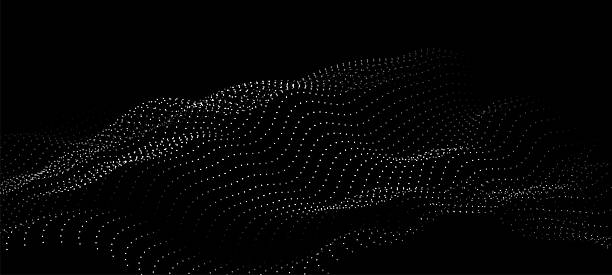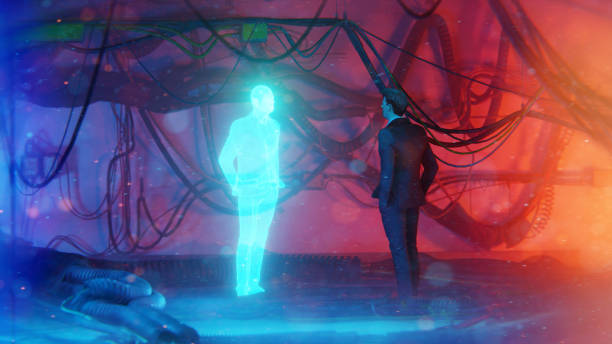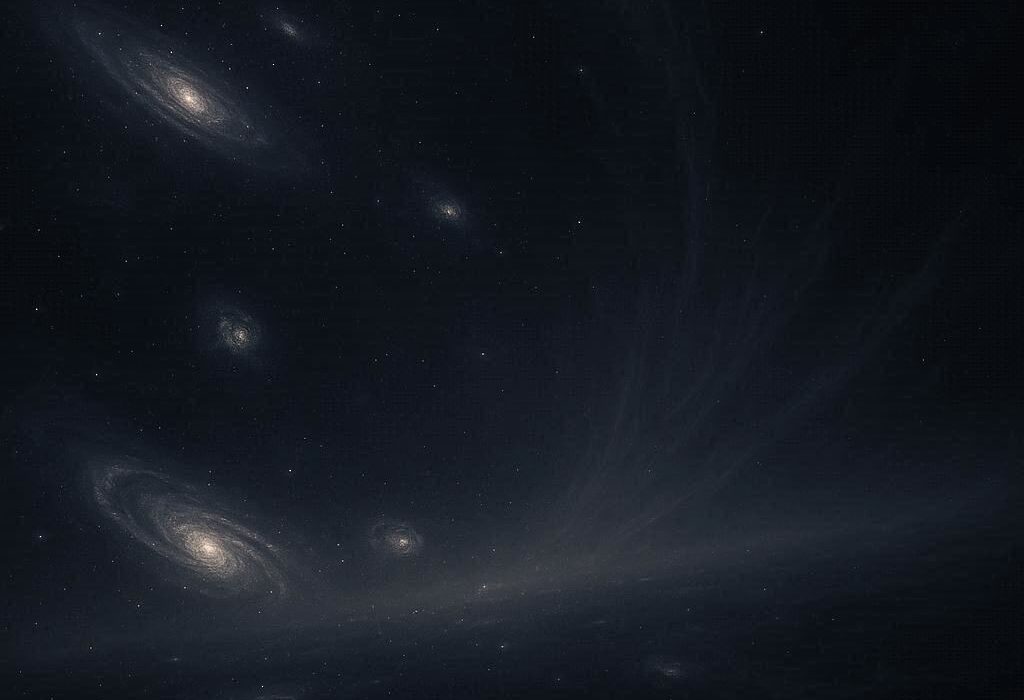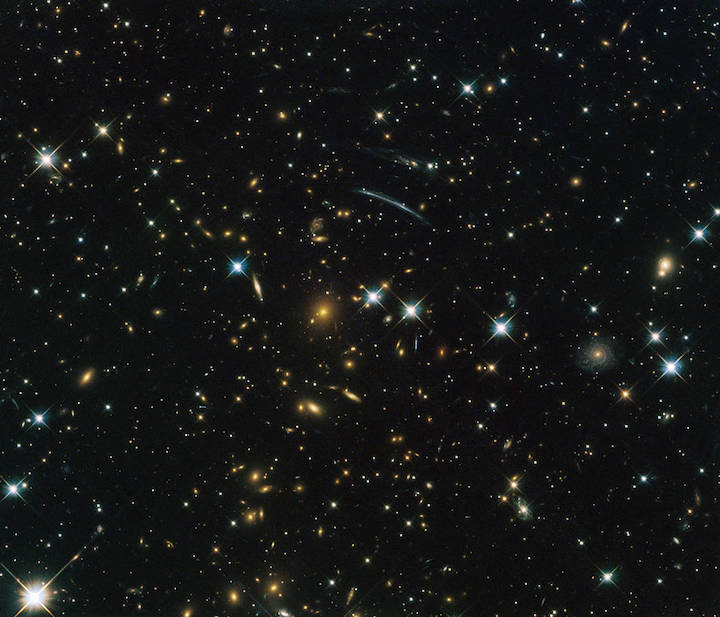For centuries, human beings have wondered about the nature of reality. Philosophers in ancient Greece pondered whether the world we see is merely shadows cast on a cave wall. Religious traditions have spoken of illusion, Maya, or the veil of appearances. In the twentieth century, science itself revealed unsettling truths—that time is relative, that matter is mostly empty space, and that the universe is woven together by invisible forces. And in the twenty-first century, a bold question has emerged that merges philosophy, physics, and technology: could it be that our universe itself is not “real” in the way we think, but rather a vast simulation?
The idea sounds like science fiction, conjuring images of humans trapped in computer-generated dream worlds. Yet leading scientists and philosophers take the question seriously. Physicist Nick Bostrom framed it as the “Simulation Hypothesis,” arguing that advanced civilizations may one day create entire universes of conscious beings within their computers. If such simulations are possible, then perhaps we ourselves are already living inside one.
But this is not merely an exercise in imagination. Physics—the science of reality itself—offers strange clues that force us to take the hypothesis seriously. The more we learn about the quantum world, about cosmic structure, about the limits of information, the more our universe begins to resemble something constructed, something coded, something perhaps running on a vast computational framework. Whether or not we are truly simulated, physics pushes us to confront the deep mystery of what “real” means.
Physics and the Question of Reality
Physics is the discipline that strips away illusions, that tests the fabric of the universe with logic, experiment, and mathematics. But what physics reveals is not the solid, certain world our senses promise us. It is a world of uncertainty, probability, relativity, and strangeness. If reality is indeed a simulation, then physics is our key to discovering its code.
One of the most important hints comes from the discovery that reality is quantized. At the smallest scales, the universe does not flow smoothly but instead is divided into discrete packets—quanta. Light comes in photons, energy is transferred in jumps, even space and time themselves may be quantized. This discreteness is suspiciously similar to how computers work: they represent information in bits, ones and zeros. Could the quantized nature of physics be a sign that the universe runs on a deeper informational substrate?
Moreover, the laws of physics themselves appear surprisingly mathematical. Equations of astonishing simplicity govern the behavior of galaxies, atoms, and light. Einstein once marveled that “the most incomprehensible thing about the universe is that it is comprehensible.” Why should reality be governed by elegant mathematical laws rather than chaos? For those who entertain the simulation hypothesis, the answer is straightforward: mathematics is the programming language of the universe, the code by which the simulation runs.
Quantum Strangeness and the Pixelated World
The greatest strangeness in physics emerges from quantum mechanics. At its core, quantum theory says that particles can exist in multiple states at once, spread out like a wave, only collapsing into a definite state when observed. This is not just a metaphor—experiments have shown time and again that the very act of measurement seems to shape reality.
This observer-dependent nature of the universe echoes what one might expect in a simulation. In a video game, for example, the world is not fully rendered everywhere at once. Instead, the computer generates only the parts of the world that the player is looking at. Similarly, in quantum physics, particles seem to “decide” their states only when they are measured. Could our universe be conserving computational resources, just like a game engine?
Another eerie clue is the idea of a smallest possible length—the Planck length, about 10^-35 meters. Below this scale, the very concept of space and distance loses meaning. Space itself appears pixelated, grainy, as though made of tiny indivisible units. If reality were continuous, there would be no reason for such a fundamental limit. But in a simulated world, just like a digital screen, resolution is finite. Perhaps the Planck length is the pixel size of the universe.
The Cosmic Code and Information as Reality
As physics advanced into the late twentieth century, a remarkable idea emerged: information may be more fundamental than matter or energy. Physicist John Archibald Wheeler coined the phrase “It from Bit,” suggesting that every particle, every field, every interaction arises from binary yes-or-no choices at the deepest level. If Wheeler was right, then the universe is not made of particles but of information.
Black hole physics reinforced this vision. When matter falls into a black hole, the question arises: what happens to the information it carries? Theoretical work by Stephen Hawking and others revealed that black holes preserve information on their surfaces in a holographic way, as if reality itself is encoded. This led to the “holographic principle”—the idea that our three-dimensional universe might actually be a projection of information written on a distant cosmic boundary, much like a hologram.
A holographic universe is not so different from a simulated one. Both suggest that what we experience as reality is generated from a deeper informational layer. The very fabric of space-time, gravity, and matter could emerge from quantum bits entangled across the cosmos, functioning as the underlying code of reality.
Cosmic Fine-Tuning: Evidence of Design?
Another unsettling fact about the universe is that it seems fine-tuned for life. Physical constants—such as the strength of gravity, the charge of the electron, the expansion rate of the universe—are balanced with extraordinary precision. If they were even slightly different, stars would not form, chemistry would not exist, and life would be impossible.
Some argue this fine-tuning is simply chance, or the result of a multiverse in which countless universes exist with varying constants, and we just happen to live in one that supports life. But others see the hand of design. In the simulation hypothesis, fine-tuning is no mystery at all: the parameters were chosen by whoever programmed the simulation. Just as game designers choose the physics of their virtual worlds, our universe’s constants could have been deliberately set.
The Speed of Light and the Limits of Computation
Physics also reveals hard limits—speed limits, energy limits, informational limits—that hint at computational boundaries. The most famous is the speed of light, an absolute maximum that nothing in the universe can surpass. To many, this looks suspiciously like the maximum speed at which information can propagate through the cosmic processor.
Similarly, the universe has a maximum amount of information that can fit into a given region of space. This “Bekenstein bound” sets a limit on the number of bits that can be stored within a finite volume. Our universe behaves not like infinite analog reality, but like a finite information system, consistent with computation.
Even the expansion of the universe itself may fit into this view. As the cosmos grows, it creates new regions of space-time, but the amount of information per region remains bounded. It is as if the cosmic computer is continually allocating new memory to keep the simulation running.
Consciousness and the Problem of Awareness
If the universe is a simulation, then the most mysterious question is how consciousness arises within it. Physics describes particles and fields, but subjective experience—the feeling of being alive, of seeing colors, of thinking thoughts—remains unexplained. How can bits of code produce the richness of human awareness?
Some argue that consciousness is the ultimate proof we are more than a simulation. They suggest that no matter how powerful a computer, it can only process information, never generate true subjective experience. Others disagree, arguing that consciousness is itself a computational process, an emergent property of sufficiently complex information systems. If that is true, then simulated beings could be just as aware as biological ones. In that case, our thoughts and emotions may be the outputs of an unimaginably sophisticated program.
Einstein once said, “Reality is merely an illusion, albeit a very persistent one.” If consciousness can emerge in a simulation, then perhaps even illusion is enough. Our sense of self, our dreams, our hopes, could be part of the simulated narrative—real to us, regardless of its origin.
The Search for Glitches
If our universe is a simulation, can we detect it? Physicists have begun to propose ways we might catch the system revealing itself. One possibility is to look for “glitches”—anomalies in physical laws that betray the limits of computation.
Some researchers suggest that cosmic rays—high-energy particles from space—might reveal hints of underlying grid structure if their energy spectrum shows cutoffs consistent with a lattice. Others explore whether quantum entanglement, which seems to connect particles instantly across space, might actually reveal the shortcuts of a simulated framework.
While no conclusive evidence has yet been found, the very fact that serious physicists propose such tests shows how far the question has come from fantasy. The hypothesis is not merely a philosophical curiosity; it is a scientific proposition that might be testable.
The Ethical Dimensions of Simulation
If we are simulated, what does that mean for ethics, for meaning, for how we live? Some argue it would not diminish life at all. Our joys and pains are real to us, regardless of their origin. A simulated sunset is still beautiful, a simulated love is still profound. Existence does not require an external guarantee of authenticity to matter.
Others worry that if we are simulated, our lives are controlled, observed, perhaps manipulated by the simulators. Are we experiments? Entertainment? Training models for some higher civilization? These unsettling possibilities remind us of our fragility, yet also underscore the importance of choosing meaning ourselves.
If we are simulations, then our moral choices might be the most “real” part of us—the aspect that transcends code. How we treat others, how we create beauty, how we pursue truth—these may echo beyond the boundaries of any program.
What Physics Ultimately Suggests
Physics does not prove we are living in a simulation. It may never be able to prove it, for any evidence could itself be part of the simulation. Yet physics shows us that reality is not what it seems. It is quantized, informational, limited, pixelated, strangely observer-dependent, and eerily mathematical.
These discoveries do not demand that the universe is simulated, but they resonate with the hypothesis. They remind us that reality is not the solid, unquestionable thing our senses promise. It is a mystery, an unfolding puzzle, perhaps deeper than we can ever comprehend.
Whether we are in a simulation or not, physics reveals that the universe is stranger than any fiction. It is a cosmos where space bends, time stretches, particles exist in ghostly superpositions, and reality itself may be holographic. These truths are no less wondrous, no less awe-inspiring, whether programmed or primordial.
Living as if Reality Matters
Ultimately, the question of whether we live in a simulation may matter less than how we live within whatever reality we inhabit. Whether programmed or not, our experiences are real to us. Our choices carry weight. Our love, our curiosity, our pursuit of understanding—these are authentic, regardless of their origin.
Perhaps the very act of questioning the simulation hypothesis is itself a feature of the universe. To wonder about reality, to reach beyond appearances, is part of what it means to be conscious. In that sense, whether the universe is “base reality” or not, we have been given the gift of wonder, the ability to marvel at existence itself.
Physics, at its heart, is not just about equations and predictions. It is about wonder. It is about peering behind the curtain and asking what lies beyond. Whether we discover code or cosmos, simulation or substance, the journey enriches us. For in seeking the truth, we reveal the deepest reality of all: the human spirit that refuses to stop asking.
Conclusion: The Persistent Illusion
Are we living in a simulation? Physics cannot answer with certainty, but it whispers possibilities that shake the foundations of certainty itself. Our universe behaves like a coded system, structured by mathematics, bounded by limits, pixelated at the smallest scales. It is as though the cosmos is inviting us to see beyond the surface, to suspect that there may be more than meets the eye.
And yet, whether or not we are simulated, we are alive. We think, we feel, we dream, we love. The stars shine in our skies, whether they are pixels or plasma. The universe speaks to us in the language of physics, whether it is code or creation. The beauty of existence remains, indestructible, beyond doubt.
So perhaps the truest answer is this: if we are in a simulation, then let us live it fully. Let us be curious, let us seek knowledge, let us cherish one another. For in the end, whether real or simulated, life is the most extraordinary experience imaginable—a miracle, persistent, mysterious, and infinitely precious.






